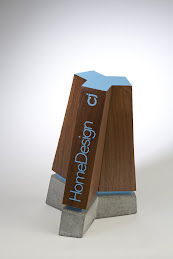Recently this question was posted on the blog. Assuming you haven't read everything on the blog in detail, I thought this would be a good question to reiterate some commonalities and differences between "outside" concrete and "inside" concrete.
Do you add #3 re-bar to that? I want to do this for an outdoor bbq island. Can you get a concrete pumping company to come and form it, or is that something you need to arrange ahead of time? I'm assuming you need a nice smooth finish on it so drinks don't spill.
First, the main difference between exterior and interior concrete is what is termed exposure condition. Imagine two pieces of chalk, one inside and one outside. Which lasts longer? The inside one of course, but why? Water. Water is the primary mechanism of deterioration for concrete. It carries bad stuff in, like chlorides and sulfates. It carries good stuff out, like calcium hydroxide. It can also cause physical deterioration, think the grand canyon. And most importantly for many of us, it expands when freezing. So the biggest difference between interior and exterior concrete is the need for air entrainment in exterior concrete for freeze-thaw durability. If you are in warm areas then there isn't as much of a difference.

Secondly, on the topic of who to do it. Concrete is supplied by a ready mixed concrete producer or you can make it using bagged concrete and a rented mixer. It all depends on the volume. A normal mixer you can rent from Home Depot holds around 2 cubic feet of wet concrete . There are 27 cubic feet in a cubic yard and a concrete mixer truck holds up to 10 cubic feet. So that is 135 batches in a rented mixer. There is a significant up-charge if you are only ordering a small amount of concrete because the producer would rather have their trucks fully-utilized. A general or specialty concrete contractor would be appropriate to form the bbq island and would generally coordinate ordering the concrete if a ready mixed supplier is needed. If there is no way to get the concrete from the truck to the bbq then they may rent a concrete pump truck for a few hours. Yes, all that needs to be arranged ahead of time and probably through your contractor.
Realistically, unless you are pouring the world's biggest backyard bbq, ready mix concrete with a pump truck is not needed.
(Photo courtesy of Concrete Exchange)
Thirdly, the topic of reinforcement allows a short soap-box sermon. Rebar, steel reinforcement, is put in concrete to carry tensile load and minimize loss of life during extreme events. If something happens, earthquake, extreme snows, overloading, etc., our concrete structures are designed to crack which signals occupants to get out. The design codes specifically forbid over reinforcing. If too much steel is present then the occupants don't see the cracks before the building/structure falls down. So more is not better when it comes to reinforcing concrete. Also, steel doesn't do anything unless the concrete cracks. No cracks mean the steel isn't needed at the current time. That begs the question, why reinforce a bbq grill? Hopefully there isn't a concern for loss of life. Most likely the in-service loading will be very, very, very well under the capacity of the concrete. Really any reinforcement is there to hold it together on the off chance there is a crack during transportation or finishing. If that is the case do you need rebar or will something else work? With rebar you have to tie it off so it is located at a particular position in the slab. This can be a challenge for experienced contractors let alone a novice at home. I prefer to use polypropylene fibers. They are mixed into the concrete, don't corrode, and can bridge lots of little cracks at the same time. FYI, I don't use rebar in floor slabs, driveways, or parking lots. Most highways also don't use rebar either. Rebar is commonly used in structural applications, not thin slabs.

Lastly, unless you are putting concrete countertops on a boat or plane, smoothness isn't going to impact drinks spilling. However, you probably don't want a broomed finish on a bbq grill top. The smoother the concrete the easier to clean up spills.
































